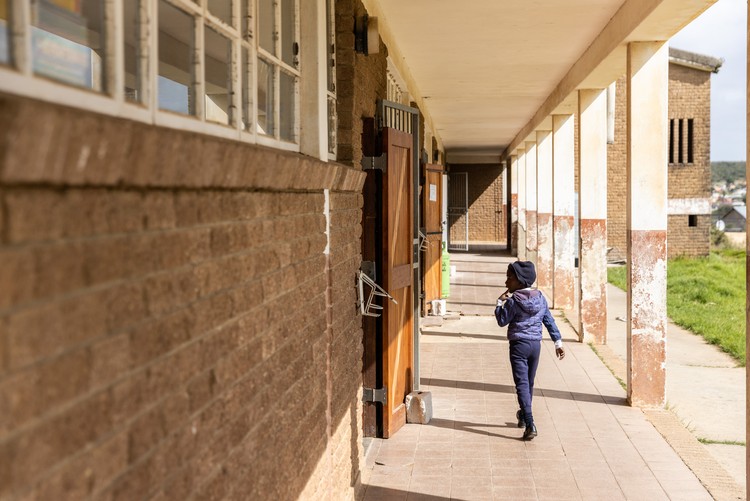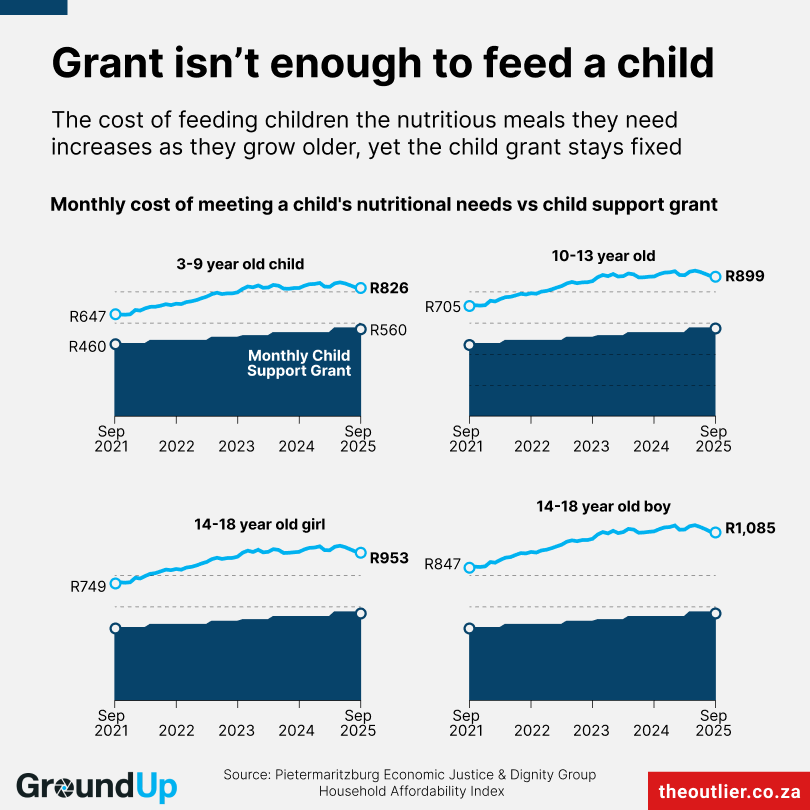
4 November 2025
An additional 1.2-million children have entered food poverty since the Covid lockdown. Archive photo: Ashraf Hendricks
South Africa’s Child Support Grant (CSG) remains the country’s largest poverty alleviation tool for children, but it is not enough.
This is according to the latest Child Gauge Report by the Children’s Institute at the University of Cape Town, released on Tuesday. The CSG still sits below the food poverty line, leaving millions at risk of hunger and malnutrition, the report says.
The grant has a wide reach – it was received by 13-million children in 2024 – but it is not keeping up with the cost of living, and child poverty is not declining fast enough.
The CSG is currently R560 a month. This falls below the food poverty line – the minimum income needed for a person to meet basic nutritional requirements – of R796.
It is also much lower than the cost of meeting a child’s nutritional needs, calculated by the Pietermaritzburg Economic Justice and Dignity Group, of between R826 and R1,085 a month, depending on the child’s age.
The Child Gauge Report says that child poverty rates dropped after the introduction of the CSG in 1998. In 2019, 33% of children were below the food poverty line compared with 53% in 2003. “The reduction in the child poverty headcount over this period was mainly the result of a massive increase in the reach of the CSG,” the report said.
But many children remain poor, and poverty rates rose during the Covid lockdown in 2020, with child food poverty rising to 39%. Rates levelled off in 2021, then rose again in most provinces in 2022 and remained high through 2024.
“Across all the poverty measures, poverty rates were higher in 2024 than they were in the pre-lockdown year of 2019. In terms of population numbers, this translates as an additional 1.2-million children below the food poverty line, and an additional 3.1-million children below the upper-bound poverty line, compared with 2019,” the report said. The upper-bound poverty line includes a small amount for items other than food.
Provincial disparities are stark. Using the upper-bound poverty line of R1,634, the report found that over 75% of children in the Eastern Cape, KwaZulu-Natal, Limpopo and North West are poor.
Gauteng and the Western Cape have the lowest rates, but both saw substantial increases in poverty: from 35% in 2019 to 54% in 2024 in Gauteng, and from 27% to 41% in the Western Cape.
Poverty remains highest in rural former homelands, with 86% of children below the upper-bound poverty line in 2024. Urban poverty rates also climbed sharply, with 56% living below the upper-bound poverty line in 2024 – up from 41% in 2019 – and 25% of children living below the food poverty line, up from 21% in 2019.
One of the report’s researchers, Dr Katherine Hall, wrote that the slow take-up of the CSG among young children remains a concern. 43% of eligible infants did not receive the grant in 2014. This dropped to 35% from 2017 to 2019, but rose again to 48% in 2020. Barriers include confusion about eligibility and the means test, lack of documentation like ID books and birth certificates, and challenges accessing SASSA offices, the report said.
The report said that children who suffer from hunger are at risk of stunting, of being overweight and of micronutrient deficiencies. The 2021-2023 National Food and Nutrition Security Survey found that 29% of children under 5 years old in the country were stunted. “Children living in households that do not report hunger may still not have access to sufficient nutritious food and be at risk of malnutrition,” the report said.
Although social grants remain the main source of income for poor households with children, the report said, the gap between the CSG and the actual cost of raising a child continues to widen. Researchers concluded that increasing the CSG to at least match the food poverty line is essential to addressing child hunger and malnutrition.

This chart by The Outlier, in partnership with GroundUp, shows how the cost of feeding a child exceeds the value of the child support grant. Read more here.